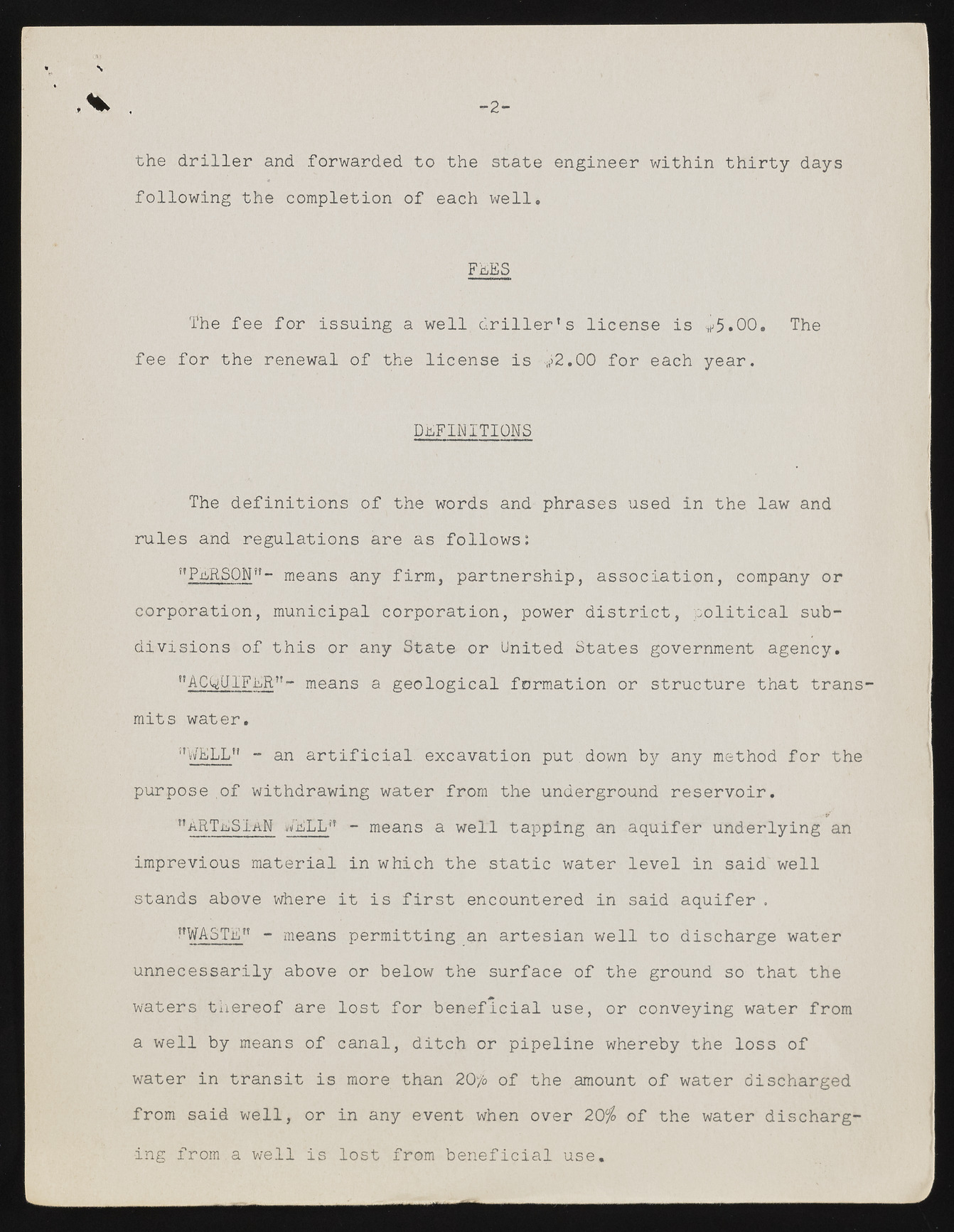Copyright & Fair-use Agreement
UNLV Special Collections provides copies of materials to facilitate private study, scholarship, or research. Material not in the public domain may be used according to fair use of copyrighted materials as defined by copyright law. Please cite us.
Please note that UNLV may not own the copyright to these materials and cannot provide permission to publish or distribute materials when UNLV is not the copyright holder. The user is solely responsible for determining the copyright status of materials and obtaining permission to use material from the copyright holder and for determining whether any permissions relating to any other rights are necessary for the intended use, and for obtaining all required permissions beyond that allowed by fair use.
Read more about our reproduction and use policy.
I agree.Information
Digital ID
Permalink
Details
Member of
More Info
Rights
Digital Provenance
Publisher
Transcription
s the driller and forwarded to the state engineer within thirty days following the completion of each well. H f e ' - 2 - FEES The fee for issuing a well driller’s license is <^5.00. The fee for the renewal of the license is W2.00 for each year. DEFINITIONS The definitions of the words and phrases used in the law and rules and regulations are as follows: ’’PERSON”- means any firm, partnership, association, company or corporation, municipal corporation, power district, political subdivisions of this or any State or United States government agency. ’’ACQUIFER”- means a geological formation or structure that transmits water. 11 WELL” - an artificial excavation put down by any method for the purpose of withdrawing water from the underground reservoir. ”ARTESIAN WELL” - means a well tapping an aquifer underlying an imprevious material in which the static water level in said well stands above where it is first encountered in said aquifer . "WASTE” - means permitting an artesian well to discharge water unnecessarily above or below the surface of the ground so that the waters tiiereof are lost for beneficial use, or conveying water from a well by means of canal, ditch or pipeline whereby the loss of water in transit is more than 2Oyb of the amount of water discharged from said well, or in any event when over 20$ of the water discharging from a well is lost from beneficial use.

